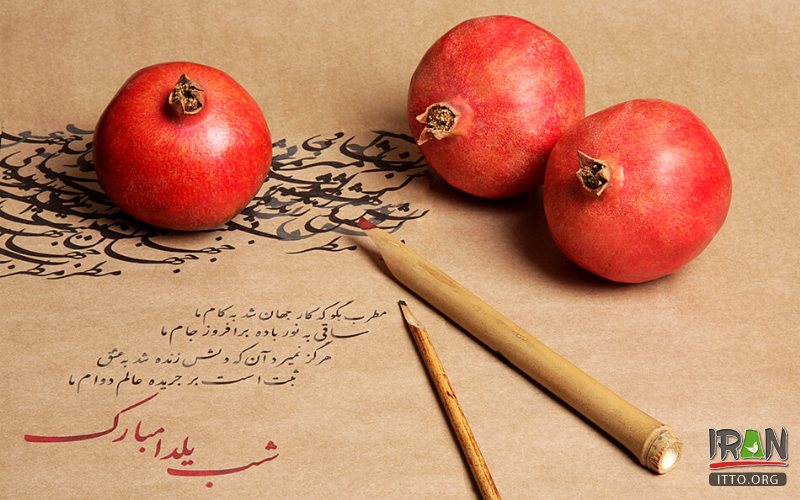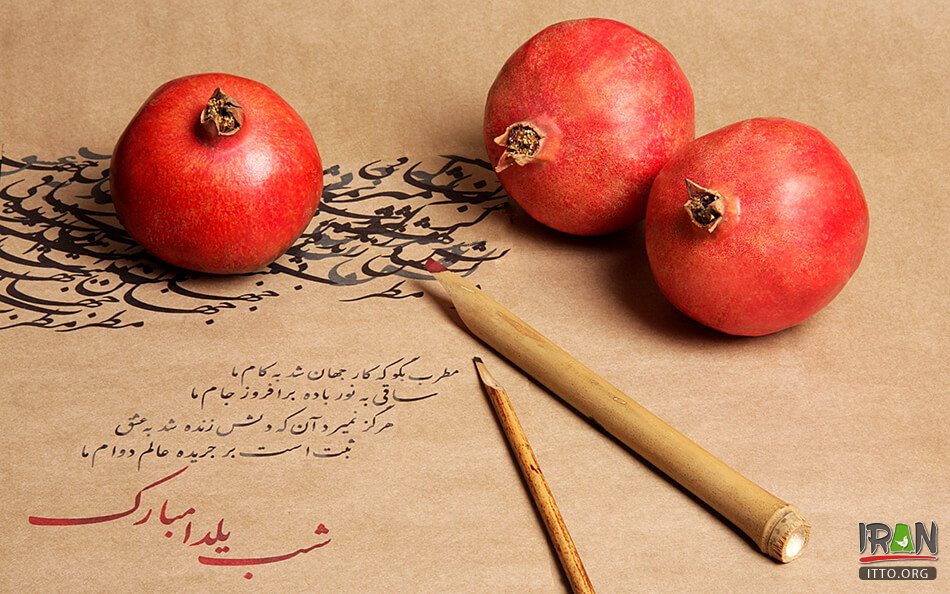On the eve of the first day of winter, the winter solstice, sometime between December 21 and 22, a Persian nocturnal celebration will be celebrated in Iran. It is commonly known as 'Yalda' (Night of Birth), or 'Shab-e Chelle', for 'chelle' meaning 40, and Yalda celebration takes place 40 days prior to the Zoroastrian fire festival of Sadeh, according to the Circle of Ancient Iranian Studies.
The ritual was registered on the National Heritage List in 2008 and proposed for a global status on UNESCO's Intangible Cultural Heritage List in 2015.
Going well into midnight, Yalda is a social occasion, when friends and family join in making wishes, feasting on nuts, pomegranates and other festive foods and reading poetry, especially the work of the 14th-century Persian poet Hafez. Some stay awake all night to rejoice in the moment when the sun rises, banishing evil and announcing the arrival of goodness.
Dried fruits, nuts, sweets and fruits such as watermelon and pomegranate are served at the get-together.
The presence of dried and fresh fruits in mid-winter is reminiscence of an ancient agricultural concern about the crops of different seasons. Pomegranates and watermelons are particularly significant.
On this night, the oldest member of the family says prayers, thanking God for previous year's blessings, and praying for prosperity in the coming year. Then the melon is cut and everyone is given a share. The cutting symbolizes the removal of sickness and pain from the family.
Before modern heating facilities came to existence, family and friends gathered in a night-long vigil around 'korsi' — a low table with a brazier of hot coals underneath.
At a time when only seasonal fruits and vegetables were available, the host, usually an elder, carefully dried and preserved grapes, honeydew melons, watermelons, pears, oranges, tangerines and apples. These were then enjoyed by everyone gathered around the 'korsi', or a fireplace.
Eating nuts is said to lead to prosperity in days to come. More substantial fare for the night's feast includes eggplant stew with plain saffron-flavored rice, rice with chicken, thick yogurt, and halva.
Winter solstice history :
"Since the Earth is tilted on its axis, the arc the Sun moves through during the day rising and falling across the year as the Earth's pole points either towards or away from the Sun," according to Royal Museums Greenwich, home to the UK Royal Observatory — which is best known for the fact that the prime meridian runs through it.
"The winter solstice occurs at the minimum point for the Northern Hemisphere, when the Sun is lowest in the sky. At this time, the Earth's North Pole is pointing away from the Sun (which is why it is so much colder in the Northern Hemisphere). For people living in the Southern Hemisphere, the South Pole is pointing towards the Sun, making it summertime 'down-under'."
In astronomical terms, the December 21 solstice marks the end of autumn in the Northern Hemisphere and the start of winter, which will technically end on March 20, 2019. It is one of the four days when a new season starts, alongside the spring equinox, the summer solstice and the fall equinox. However, in meteorological terms, winter begins on December 1 and ends on February 28. This is because the meteorological definition takes into account annual temperature cycles.
The solstice is important because it marks the beginning of the days getting longer (a trend that will continue until the spring equinox). As such, it has been celebrated by cultures throughout human history.
The December solstice occurs far more frequently on the 21 or 22 than it does on the 20 or 23. In fact, the last December 23 solstice took place in 1903 and won't happen again until 2303. Similarly, a December 20 solstice is very rare, with the next one not set to take place until 2080.
The reason that the date of the solstices varies can be explained by the differences between the Gregorian calendar and the 'tropical year'.



